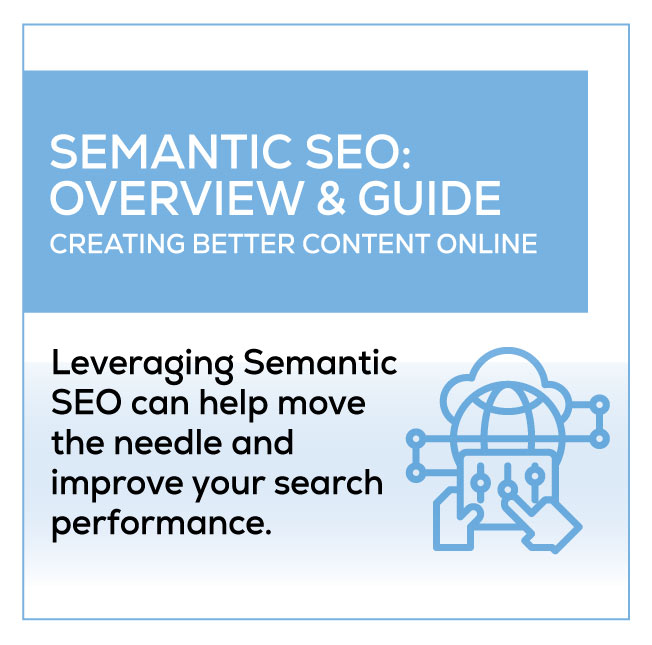Semantic SEO: General Overview
Importance of semantic SEO for improving search rankings.

Content Strategy and “Intent”
When considering leveraging a Semantic SEO strategy, it is important to understand users intent, context, and meaning behind search queries, as opposed to relying solely on keywords.
Semantic SEO involves understanding the intent, context, and meaning behind search queries, rather than solely focusing on keywords. We’ve put together this Semantic SEO Guide, to provide valuable insights into various techniques and tips for implementing semantic SEO effectively, such as optimizing content for semantic relevance, conducting thorough keyword research, understanding user intent, using structured data, and focusing on topical authority.
Informational Intent:
This type of search is aimed at finding information on a specific topic. For instance, someone may search “How to bake a cake from scratch.”
- Informational Intent: Search Queries: The user is looking for information about a particular topic or subject. They want to learn something or gain knowledge.
- How to care for leather boots
- What are the benefits of using a standing desk
- How to choose the right size bike for me
- What is the difference between OLED and LED TVs
- How to make a perfect cup of coffee at home
Navigational Intent:
This type of search is used to find a specific website or page. For instance, someone might search for “Facebook login” to navigate directly to the Facebook login page.
Navigational Intent: Search Queries: The user is looking for a specific website or webpage. They already know what they are looking for and want to navigate directly to it.
- Amazon login
- Walmart website
- Best Buy store locator
- Target shopping cart
- eBay account settings
Transactional Intent:
This type of search indicates that the user wants to take a specific action, such as purchasing a product or subscribing to a service. For example, someone might search for “Buy shoes online.”
Transactional Intent: Search Queries: The user is looking to make a purchase or engage in a specific action such as signing up for a newsletter or registering for an event.
- Buy men’s running shoes online
- Order women’s winter boots with free shipping
- Purchase kids’ backpacks for school
- Best deals on smartwatches
- Buy organic cotton bed sheets online
- Order pet food and toys for delivery
- Buy beauty products for sensitive skin
- Purchase kitchen appliances online
- Buy a smartwatch with heart rate monitor and GPS.
Local Intent:
This type of search is used to find businesses or services near the user’s location. For example, someone might search for “best pizza delivery near me” to find pizza places that offer delivery in their area.
Local Intent Search Queries: The user is looking for a specific product or service in their local area. They want to find a business that offers what they are looking for and is conveniently located.
- Buy running shoes near me
- Best coffee shops in downtown [city name]
- Pet stores with curbside pickup
- Bookstores in [neighborhood name]
- Hardware stores open now in [city name]
- Order groceries for delivery in [zip code]
- Affordable furniture stores in [city name]
- Bike shops with repair services in [neighborhood name]
- Best pizza delivery in [city name]
- Where to buy organic produce in [zip code]
In addition, Semantic SEO also helps search engines to better understand the context of your content, improving the overall user experience. With the rise of voice search and natural language processing, semantic SEO has become essential for businesses that want to stay ahead of the competition.
By leveraging search intent and semantic SEO, you can enhance your online visibility in search results, drive more organic traffic, and stay ahead of your competition.
What does Optimizing Semantic SEO require?
Optimizing Content for Semantic Relevance:
Creating high-quality, contextually relevant content that addresses user intent, which ultimately improves search rankings.
Comprehensive Keyword Research:
Importance of thorough keyword research, including long-tail keywords and semantically related phrases, to better target user queries and enhance search performance.
Understanding User Intent:
The need to comprehend and address the different types of user intent, such as informational, navigational, transactional, and commercial investigation, in order to create more effective content.
Utilizing Structured Data:
Benefits of implementing structured data to provide search engines with better context and understanding of your content, resulting in enhanced visibility and improved search rankings.
Building Topical Authority:
Establishing expertise and authority within specific topics to boost search rankings and foster long-term success in the competitive SEO landscape.
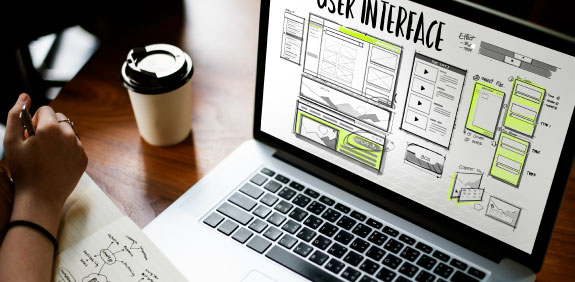
Core Page Content Areas
- Keyword research:
Conduct keyword research to find relevant and high-volume keywords that you can target for your product pages. - On-page optimization:
Optimize your product page titles, meta descriptions, and heading tags should support overarching topic and contain variations of your target keywords or information that supports main topic. - Product descriptions:
Write unique and compelling product descriptions that include your target keywords and provide valuable information to your customers. - Image optimization:
Optimize your product images by compressing them, using descriptive file names and alt tags, and adding structured data markup where appropriate. - User-generated content:
Encourage your customers to leave reviews and ratings on your product pages, as this can help improve your search engine rankings. - Structured data markup:
Add structured data markup to your product pages to help search engines understand your content better. - Breadcrumbs:
Use breadcrumbs to help users navigate your website and improve the user experience. - Internal linking:
Link to related products and categories on your website to help search engines understand the structure of your website. - Mobile optimization:
Ensure that your product pages are optimized for mobile devices, as more and more users are browsing and shopping on mobile. - Validation:
Validate your HTML, CSS and structured data, to ensure that your website is error-free and compliant with best practices.
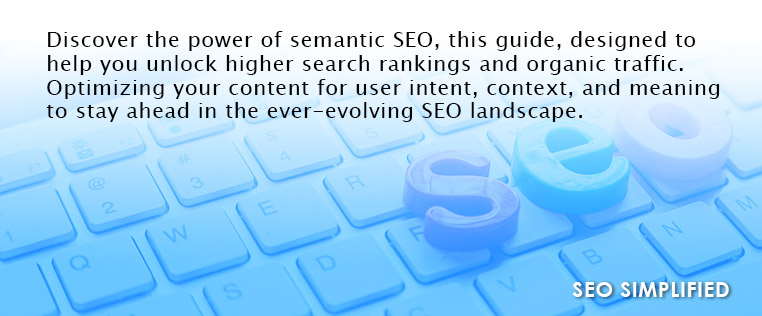
Web Page Structure – Overall
Best Practices for Effective SEO
Core Content: Overall
User Experience
- Ensure the page is easy to navigate.
- Use breadcrumb navigation to help users understand the website structure.
- Use a clear call-to-action to encourage users to take the desired action.
- Use a responsive design that works on all devices.
Meta Information: Overview
Web page meta information, also known as meta tags, refers to a set of HTML tags that provide additional information about a web page to search engines, web browsers, and other web services.
What is meta information?
This information is not typically displayed to users on the web page itself but is embedded in the page’s source code. Meta information helps search engines understand the content and context of a page, which can improve indexing, crawling, and search rankings.
Some common types of meta information include:
- Meta Title: This tag defines the title of the web page, which appears as the clickable link in search engine results pages (SERPs) and at the top of a browser’s window or tab. A well-crafted title helps users understand the content of the page and can improve click-through rates.
- Meta Description: This tag provides a brief summary of the page’s content and is often displayed below the title in SERPs. A well-written meta description can entice users to click on the link, increasing click-through rates and driving more organic traffic to the website.
- Meta Keywords: Although no longer considered essential by most search engines, this tag was once used to specify a list of keywords relevant to the page’s content. Some search engines may still use it to gain additional context about the content.
- Meta Robots: This tag instructs search engine crawlers on how to interact with the page, such as whether to index the content, follow links, or archive the page. It helps webmasters control the way search engines crawl and index their websites.
- Meta Viewport: This tag is crucial for responsive web design, as it tells the browser how to adjust the page’s dimensions and scaling to fit various screen sizes, ensuring a user-friendly experience on mobile devices.
- Meta Charset: This tag defines the character encoding for the web page, ensuring that text is displayed correctly across different browsers and devices.
Including relevant and accurate meta information in a web page’s HTML can improve its search performance, user experience, and overall accessibility.
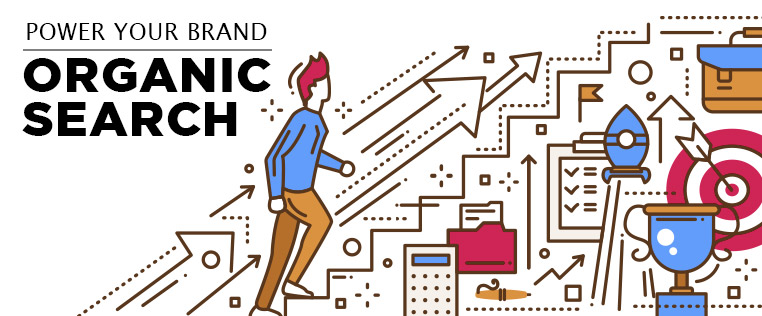
Page Titles & Descriptions
Many online businesses currently leverage page titles and descriptions to enhance their SEO performance and improve user experience. You’ll want to focus effort in this area as well by crafting compelling, informative, and keyword-rich page titles and descriptions, this will help you to effectively communicate the content and purpose of web pages to both users and search engines.
In a competitive online environment, having well-optimized page titles and descriptions is important for aligning content with intent as well as standing out, attracting potential customers, and being ahead of your competitors.
Page Title
- Use a descriptive and unique title that includes the target keyword.
- Keep the title under 60 characters.
Meta Description
- Write a compelling and informative meta description that entices clicks.
- Include the target keyword in the meta description.
- Keep the meta description under 155 characters.
On-Page Content: Overview
What are webpage heading tags?
Web page heading tags are HTML elements that define the headings and subheadings within the content of a web page. They range from H1 to H6, with H1 being the highest level (or main heading) and H6 being the lowest level (or smallest subheading). These tags help to create a clear structure and hierarchy for the content, making it easier for both users and search engines to understand and navigate the page.
To best use heading tags for SEO, follow these guidelines:
- Use One H1 Tag: The H1 tag should be used only once per page, and it should contain the main topic or focus of the content. It’s often the same or similar to the title tag, and it should include relevant keywords to signal the primary subject to search engines.
- Organize Content with H2 to H6 Tags: Use H2 to H6 tags to break down your content into smaller sections and subsections, creating a logical hierarchy. This helps search engines understand the structure of your content and makes it easier for users to navigate and find the information they’re looking for.
- Include Relevant Keywords: Incorporate relevant keywords into your heading tags, particularly the H1 and H2 tags, without overstuffing or sacrificing readability. This can help search engines understand the topic and context of your content and improve your page’s ranking for those keywords.
- Keep Headings Concise and Descriptive: Write clear, concise, and descriptive headings that accurately reflect the content in each section. This not only improves user experience but also helps search engines comprehend the context and relevance of your content.
- Maintain Readability: While it’s essential to include keywords in your headings, prioritize readability for your users. Overusing keywords or creating unnatural-sounding headings can have a negative impact on user experience and potentially harm your SEO efforts.
- Use Proper Nesting: Ensure that heading tags are used in the correct order, without skipping levels. For example, an H3 tag should follow an H2 tag, rather than jumping from H2 to H4. Proper nesting helps maintain the content hierarchy and makes it easier for search engines to understand the structure of your content.
By using heading tags effectively, you can enhance the structure, readability, and SEO performance of your web pages, making them more accessible and appealing to both users and search engines.

Header Tags
- Use H1 for the main page title.
- Use header tags (H1, H2, H3) to structure the content on the page.
- Use H2 for subheadings.
- Use H3 for sub-subheadings.
Content
- Write unique and informative content that includes the target keyword naturally.
- Use bullet points and subheadings to break up the text.
- Focus on the benefits and features of the product or service.
- Incorporate user-generated content such as reviews and ratings.
Images and Videos
- Use high-quality images and videos that are relevant to the content.
- Optimize images and videos for page speed.
- Use descriptive filenames and alt tags for images.
- Add structured data markup to images and videos.
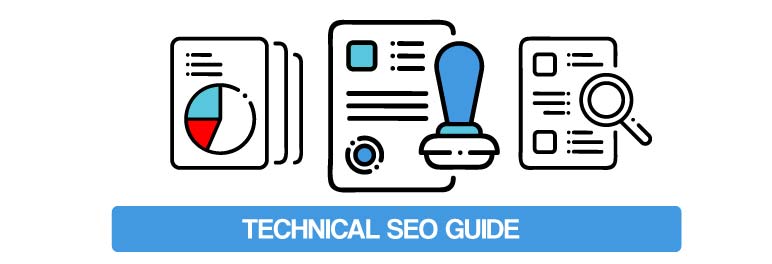
Technical SEO: Overview
What is Technical SEO?
Technical SEO optimization focuses on enhancing the website’s structure, usability, and accessibility, ensuring that search engines can effectively discover, understand, and index the site’s content. Some key components of technical SEO include:
- Site Speed: Optimizing the website’s loading speed to provide a better user experience and positively impact search rankings.
- Mobile-Friendliness: Ensuring the website is responsive and accessible across various devices, including smartphones and tablets, to cater to the growing mobile user base.
- Website Architecture: Creating a logical and user-friendly site structure that allows both users and search engines to navigate and understand the website’s content easily.
- XML Sitemap: Generating an XML sitemap that lists all the website’s URLs to help search engines discover and index the site’s content more efficiently.
- Robots.txt: Using a robots.txt file to control how search engine crawlers interact with the website, specifying which pages or sections should be crawled or excluded from indexing.
- URL Structure: Implementing clean, descriptive, and keyword-rich URLs that provide a clear indication of the page’s content to both users and search engines.
- SSL/HTTPS: Securing the website with an SSL certificate to enable HTTPS, ensuring data privacy and building trust with users while positively impacting search rankings.
- Structured Data: Utilizing structured data markup (such as schema.org) to provide additional context about the website’s content, helping search engines better understand and display the content in search results.
- Canonicalization: Addressing duplicate content issues by implementing canonical tags that indicate the preferred version of a page, improving the site’s indexing and avoiding potential penalties.
- Fixing Broken Links: Identifying and fixing broken links (404 errors) to improve the user experience and maintain the flow of link equity throughout the site.
In summary, technical SEO encompasses a range of optimization practices aimed at improving the technical aspects of a website, ensuring that search engines can effectively crawl, index, and rank the site’s content, while also providing an optimal user experience.
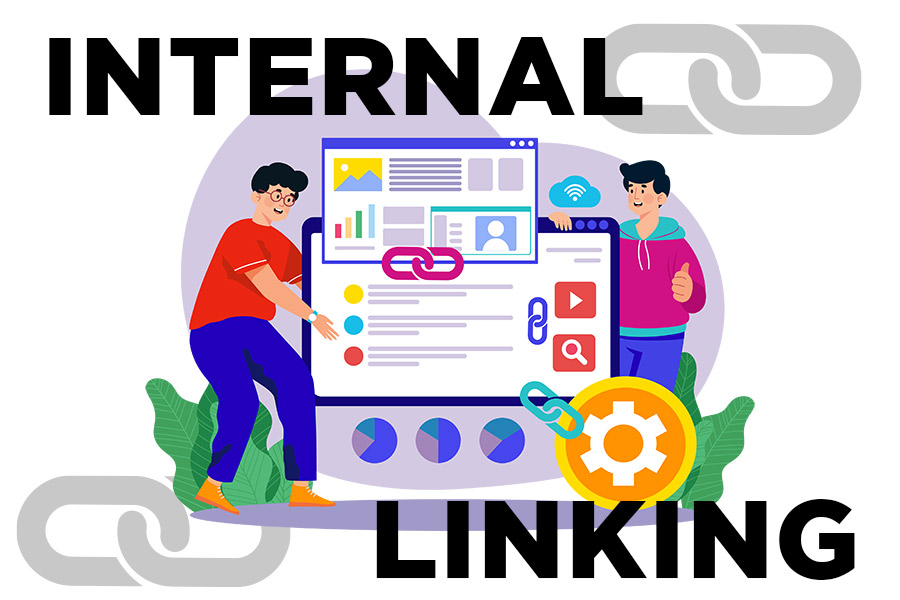
Internal Link Strategies
What is internal linking?
Internal linking plays a crucial role in SEO by connecting different pages within a website through hyperlinks.
Internal linking offers several benefits for search engine optimization, including:
- Improved Crawlability and Indexation: Internal links help search engine crawlers discover and navigate your website more effectively, allowing them to index your pages more efficiently, which can result in better search rankings.
- Distribution of Link Equity: Internal links spread link equity (also known as “link juice”) from high-authority pages to other pages within the site, boosting their search ranking potential and overall domain authority.
- Enhanced User Experience: A well-planned internal linking structure facilitates seamless navigation, helping users find relevant content more easily, which can lead to higher engagement, lower bounce rates, and longer dwell time—all positive signals for search engines.
- Topical Authority and Context: Internal linking between topically related pages helps search engines understand the relationships between your content and the overall site structure, establishing your website as a reliable source of information in your niche.
- Improved Rankings for Long-Tail Keywords: By linking to pages targeting specific long-tail keywords, you can bolster their visibility and rankings in search results, driving more organic traffic to your website.
- Decreased Exit Rates: Internal links encourage users to explore more content within your site, reducing the likelihood of them leaving after viewing a single page. Lower exit rates can positively impact your search rankings.
Internal linking is a vital component of SEO that helps improve crawlability, distribute link equity, enhance user experience, establish topical authority, boost long-tail keyword rankings, and decrease exit rates, ultimately contributing to better search performance.
Internal Linking
- Use internal linking to related products, services, and relevant/ useful pages on your website.
- Use descriptive anchor text that includes the target keyword.
Boost your website’s SEO performance and user experience with a sound internal link strategy, enabling seamless navigation and effective distribution of link equity. Enhance your site’s discoverability, indexation, and topical authority while driving higher engagement and conversions through a well-structured content ecosystem.
On-Page Content: Lists and Tables
Using tables and lists within on-page content can have several advantages for SEO. Firstly, they help to break up content into smaller, more digestible sections, making it easier for users to read and understand. This, in turn, can help to improve user engagement and reduce bounce rates.
Importance of Structured Lists:
Enhance readability and improve the organization of information on webpages, making it easier for both users and search engines to digest content.
Effective Use of Tables:
Organize and display data in a clear, concise manner, making it easy for users to understand and for search engines to parse the information.
Secondly, tables and lists can help to organize information and make it more scannable for search engines, which can improve the page’s relevance and ranking potential for relevant keywords.
Tables and lists can help to enhance the user experience on mobile devices, where users may be more likely to scan content quickly. By presenting information in a clear and concise way, tables and lists can help to improve usability and reduce frustration for mobile users, which can improve engagement metrics and ultimately lead to better SEO performance.
Product Description and Listing Pages (PDP’s + PLP’s)
Product description and listing web pages provide detailed information about products or services offered by a business, including features, specifications, pricing, and images.
- These pages play a crucial role in the user experience by helping potential customers make informed decisions about their purchases.
- A well-structured and informative product description or listing page should be clear, concise, and engaging, with relevant keywords and high-quality visuals.
This ensures that users can quickly understand the key benefits and unique selling points of the product or service, ultimately leading to higher conversion rates, increased customer satisfaction, and improved search rankings.
A Better Web Focuses on User Experience
User Experience
- Ensure the product description page is easy to navigate
- Use breadcrumb navigation to help users understand the website structure
- Use internal linking to related products and categories
- Use a clear call-to-action to encourage users to make a purchase
Keyword Research
- Identify the target audience
- Research relevant keywords with high search volume as well as long tail keywords
- Analyze keyword competition
On-Page Content: PDP + PLP
Page Title and Meta Description
- Include the target keyword in the page title
- Write a compelling meta description that entices clicks
Product Description
- Write unique, engaging, and informative product descriptions
- Include a summarized paragraph of product higher up on page
- Incorporate the target keyword naturally within the content
- Use bullet points and subheadings to break up the text
- Focus on the benefits and features of the product
- Use descriptive language that appeals to the target audience
- Incorporate user-generated content such as reviews and ratings
Images and Videos
- Use high-quality product images and videos
- Optimize images and videos for page speed
- Use descriptive filenames and alt tags for images
- Add structured data markup for product schema
The home page and other core pages should be strategically optimized for different keyword focuses and purposes, working together to create a comprehensive and user-friendly website structure that improves search rankings and overall SEO value.
On-Page Content: Homepage
Header Tags
- Use header tags (H1, H2, H3) to structure the content on the page.
- Use H1 for the main page title.
- Use H2 for subheadings.
- Use H3 for sub-subheadings.
Content
- Write unique and informative content that includes the target keyword naturally.
- Use bullet points and subheadings to break up the text.
- Focus on the purpose of the homepage, whether it’s introducing your business or highlighting your products/services.
- Include a clear call-to-action that encourages users to take the desired action.
Images and Videos
- Use high-quality images and videos that are relevant to the content.
- Optimize images and videos for page speed.
- Use descriptive filenames and alt tags for images.
- Add structured data markup to images and videos.
Homepage: SEO and Page Structure
User Experience
- Ensure the homepage is easy to navigate.
- Use breadcrumb navigation to help users understand the website structure.
- Use a responsive design that works on all devices.
- Optimize page speed for fast load times.
- Ensure the homepage provides a positive user experience and reflects the branding of your business.
Page Title
- Use a descriptive and unique title that includes the target keyword.
- Keep the title under 60 characters.
Meta Description
- Write a compelling and informative meta description that entices clicks.
- Include the target keyword in the meta description.
- Keep the meta description under 155 characters.
Technical SEO: Homepage
Internal Linking
- Use internal linking to top-level categories, products or impactful pages and content on your website.
- Use descriptive anchor text that includes the target keyword.
By following these page structure guidelines, you can create pages that are optimized for SEO and provide a positive user experience for your audience.
For SEO value, the home page and other core pages play distinct yet complementary roles in a website’s structure and overall search performance.
- Home Page: The home page serves as the digital front door and central hub of a website, providing an overview of the brand, its offerings, and key messages.
From an SEO perspective, the home page should be optimized with relevant keywords and descriptive meta tags, targeting broader, high-level search terms. It should also feature a clear navigation structure that allows users and search engine crawlers to easily access other core pages. - Other Core Pages: These pages are essential for presenting specific information about a business’s products, services, or other important aspects (e.g., About Us, Blog, Contact Us, or Product/Service pages).
Each core page should be optimized for targeted, specific keywords relevant to its content and purpose. This ensures that users and search engines can find and understand the information provided, leading to increased visibility and organic traffic.
Improving Experience Through Content: Hub and Pillar Pages
The hub and pillar page content strategy offers numerous benefits by organizing and interlinking related content to create a comprehensive, user-friendly knowledge base around a central topic. This approach involves creating a pillar page that provides a high-level overview of a core topic and several hub pages (also known as cluster content) that dive deeper into specific subtopics. Key benefits include:
- Topical Authority: By thoroughly covering a central topic and its related subtopics, this strategy establishes your website as a reliable source of information, enhancing topical authority and improving search rankings.
- Internal Linking: The hub and pillar strategy naturally promotes internal linking, with the pillar page linking to hub pages and vice versa. This strengthens the website’s overall link structure, helping search engines discover and index content more effectively while distributing link equity throughout the site.
- User Experience: This content organization method provides users with a clear and logical structure, making it easy for them to navigate and find relevant information. This improved user experience can lead to higher engagement, lower bounce rates, and increased dwell time.
- Targeting Long-Tail Keywords: Hub pages allow for targeting long-tail, specific keywords that are less competitive but highly relevant to user queries. This can result in increased organic traffic and higher search rankings for those terms.
- Content Maintenance: The hub and pillar structure simplifies content updates, as updating the pillar page or individual hub pages can have a positive cascading effect on the entire content cluster, keeping the information up-to-date and relevant.
The hub and pillar page content strategy offers significant SEO value by establishing topical authority, improving internal linking, enhancing user experience, targeting long-tail keywords, and simplifying content maintenance.
The overall idea is a central point or core that connects and organizes related content on a website. It is designed to provide an overview of a specific topic, while offering easy navigation to more in-depth information on pillar pages.
A well-structured hub page improves user experience, boosts engagement, and enhances a website’s SEO value by promoting internal linking and reducing bounce rates.
Development and planning of in-depth resources that cover a specific subtopic within the broader theme. It provides valuable, detailed information to readers, answering their questions and addressing pain points.
By targeting long-tail keywords and featuring high-quality content, pillar pages help improve a website’s search engine rankings, attract organic traffic, and establish authority and expertise in the given niche.
Creating a Hub and Pillar Content Strategy
Create Pillar Pages: Content Strategy
- Choose broad topics relevant to your business.
- Develop in-depth content that covers all aspects of the topic.
- Use internal linking to direct users to related content on your website.
Create Hub Pages: Content Strategy
- Choose subtopics related to the pillar pages.
- Develop content that covers the subtopics in depth.
- Use internal linking to direct users to the pillar page and other relevant content on your website.
Linking Strategy
- Use internal linking to connect hub pages to the relevant pillar page.
- Provide internal links back to the hub pages from the pillar page. (breadcrumbs and in-content)
- Use descriptive anchor text that includes relevant keywords.
- Create a clear and logical link structure that allows users to navigate easily between hub and pillar pages.
Benefits of Hub and Pillar Page Link Structure
- Helps search engines understand the structure of your website and improves indexing.
- Provides a clear and logical structure for users to navigate your website.
- Increases the time spent on your website and reduces bounce rates.
- Improves the relevance and authority of your website, which can lead to higher search engine rankings.
Bad Page Titles
Bad page titles are those that fail to accurately represent the content of a webpage or do not effectively communicate its purpose to users and search engines. They may be too vague, overly long, stuffed with keywords, or entirely unrelated to the page’s content.
Such page titles can negatively impact user experience by causing confusion, misleading users, and reducing click-through rates from search engine results pages (SERPs), as users may not find the information they were searching for or may become frustrated with the site’s content.
Ultimately, bad page titles can lead to lower engagement, higher bounce rates, and reduced search rankings.
Page Title Examples
Bad Page Title Examples
- Welcome to Our Website – This title is too generic and does not provide any information about what the website offers.
- Page 1 – This title is too vague and does not provide any useful information about the content on the page.
- Untitled Document – This title does not provide any information about the content on the page and can be confusing for users.
- Keyword Stuffing: Tips and Tricks for Boosting SEO – This title uses keyword stuffing, which is frowned upon by search engines and can hurt your rankings.
- Buy Now! Limited Time Offer! – This title is too salesy and does not provide any information about the content on the page.
Good SEO Titles
Good page titles are those that accurately and effectively represent the content of a webpage, clearly communicating its purpose to both users and search engines. They are concise, informative, and include relevant keywords without being overly stuffed or repetitive.
Well-crafted page titles enhance user experience by providing users with a clear understanding of the page’s content, enticing them to click on the link in search engine results pages (SERPs), and guiding them to the information they are seeking.
As a result, good page titles contribute to higher click-through rates, increased user engagement, and improved search rankings.
Good Page Title Examples
- How to Train for a Half Marathon: Tips and Tricks – This title is specific and provides useful information about the content on the page.
- Top 10 Best Coffee Shops in San Francisco – This title is specific and provides useful information about the content on the page.
- The Ultimate Guide to Plant-Based Eating for Beginners – This title is specific and provides useful information about the content on the page.
- 10 Easy DIY Home Decor Ideas on a Budget – This title is specific and provides useful information about the content on the page.
- The Benefits of Yoga: Improving Flexibility, Strength, and Overall, Health – This title is specific and provides useful information about the content on the page.
Descriptive Core Page Titles
Page: About us | Good Page Title Examples
- About Us: Our Mission and Values at [Company Name]
- Meet Our Team: Get to Know the Faces Behind [Company Name]
- Our Story: How [Company Name] Was Founded and What We Believe In
- Why Choose Us: What Sets [Company Name] Apart from the Competition
Good SEO Page Titles Should Be…
- Descriptive, informative and naturally flowing
- Clear in what a page content will contain
- Speak toward customer persona specific problems &motivators
Good page descriptions are brief, informative summaries that accurately convey the content and purpose of a webpage to users and search engines. They are engaging, well-written, and incorporate relevant keywords without being overly stuffed.
Effective page descriptions enhance user experience by offering users a clear preview of the page’s content, enticing them to click on the link in search engine results pages (SERPs), and helping them find the information they are seeking.
Good page descriptions lead to higher click-through rates, increased user engagement, and better search rankings.
Page Descriptions: Good and the Bad
Bad SEO Page Descriptions:
Bad page descriptions are those that fail to accurately represent the content of a webpage or do not effectively communicate its purpose to users and search engines.
They may be too vague, excessively long, stuffed with irrelevant keywords, or completely unrelated to the page’s content. Such page descriptions negatively impact user experience by creating confusion, misleading users, and resulting in lower click-through rates from search engine results pages (SERPs).
Users may struggle to find the information they were searching for or become frustrated with the site’s content. Ultimately, bad page descriptions can lead to reduced user engagement, higher bounce rates, and lower search rankings.
Bad Page Descriptions
- Welcome to our website. We sell products.
- Our website has everything you need. Visit us now.
- We are the best in the business. Check us out.
- This page is about our products. Buy them now.
- Our website is awesome. Come and see for yourself.
Good, Helpful Page Descriptions:
- Shop the latest collection of [Product Type] at [Brand Name]. Find the perfect [Product Feature] for your needs and enjoy free shipping on orders over $50.
- Discover our range of [Service Type] and see how we can help you achieve your goals. Our expert team is here to support you every step of the way.
- Learn more about our company and our commitment to sustainability. Find out how we’re making a positive impact in our community and beyond.
- Get the answers you need with our comprehensive [Topic] FAQ. From shipping and returns to product care, we’ve got you covered.
- Explore our blog for expert tips, advice, and inspiration on [Topic]. From industry insights to DIY tutorials, we’ve got everything you need to take your [Topic] game to the next level.
Best Practice Approach for Page Descriptions
- Good page descriptions provide helpful information that entices users to click through to your website.
- They include relevant keywords and a clear call-to-action that encourages users to engage with your content.
By following these guidelines, you can create page descriptions that are optimized for SEO and provide value to your audience.
Advanced Technical SEO & Performance
Structured Data
Schema Markup: Implement structured data using schema.org vocabulary to help search engines better understand and display your content, potentially improving click-through rates.
Advanced Technical SEO & Performance
Core Web Vitals
- Loading: Largest Contentful Paint (LCP): Measures the time it takes for the main content to load.
- Interactivity: First Input Delay (FID): Assesses the time it takes for a page to become interactive.
- Visual Stability: Cumulative Layout Shift (CLS): Evaluates the amount of unexpected layout shifts on a webpage.
Content Delivery Network (CDN)
Speed and Reliability: Improve load times and website performance by distributing content across a network of servers, reducing the distance between users and servers.
Html, CSS, and JavaScript Optimization
- Minification: Remove unnecessary characters and whitespace from JavaScript files to reduce file size and improve load times.
- Asynchronous Loading: Load JavaScript files without blocking the rendering of other elements on the page, improving overall page load speed.
Next-Gen Images and Video
Format Selection: Utilize modern image and video formats, such as WebP, AVIF, and HEVC, to achieve superior compression and quality, leading to faster load times and improved user experience.
Page Rendering
- Server-Side Rendering (SSR): Render the HTML content on the server before sending it to the browser, improving initial page load times and enhancing search engine crawlability.
- Client-Side Rendering (CSR): Render content directly in the browser, allowing for dynamic content updates without the need for a full-page refresh.
Document Object Model (DOM)
- Optimization: Reduce DOM complexity by minimizing the number of elements, nesting levels, and unused code, leading to faster page rendering and improved user experience.
- Accessibility: Ensure proper use of HTML elements and attributes to create a well-structured DOM, making it easier for search engines to understand and index content.
Semantic SEO can be a vital approach to enhancing search rankings and staying competitive in today’s digital landscape.
By focusing on understanding user intent, context, and meaning behind search queries, businesses can create high-quality, relevant content that resonates with their target audience. The guide underscores the importance of optimizing content for semantic relevance, conducting in-depth keyword research, using structured data, and building topical authority.
By implementing these strategies, businesses can expect improved search visibility, increased organic traffic, and a solid foundation for long-term success in the ever-evolving world of SEO.
Need help? Want to chat? Contact us we’re happy to help.

